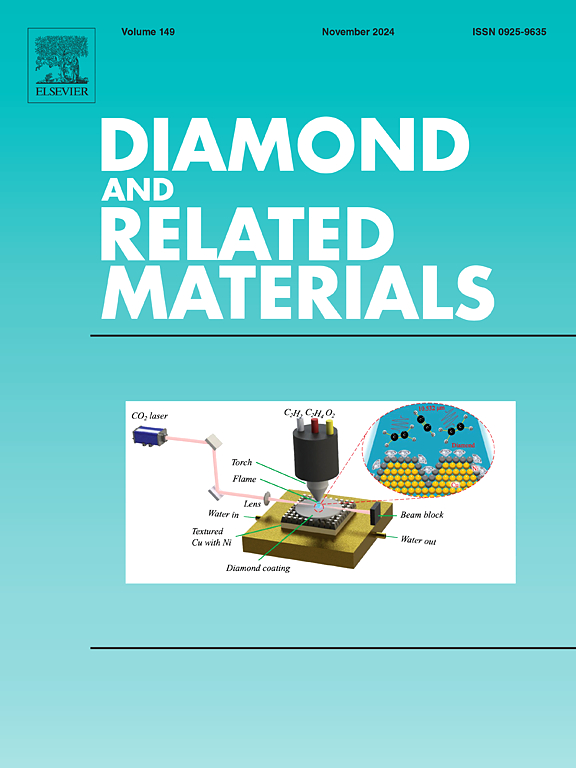等离子喷涂过程中原位脱落的少层石墨烯:制备耐热腐蚀Cr3C2-NiCr涂层的途径
IF 4.3
3区 材料科学
Q2 MATERIALS SCIENCE, COATINGS & FILMS
引用次数: 0
摘要
在高温工业中,热腐蚀是一个巨大的挑战,它会导致材料加速降解和部件失效。本研究研究了原位脱落少层石墨烯增强Cr3C2-NiCr涂层在900°C Na2SO4-60wt %V2O5盐环境中的热腐蚀行为。研究了三种涂层组成:纯Cr3C2-NiCr涂层、1%石墨烯增强Cr3C2-NiCr涂层和2%石墨烯增强Cr3C2-NiCr涂层。与Cr3C2-NiCr涂层的277 mg/cm2相比,2 wt%石墨烯增强涂层表现出优异的耐热腐蚀性能,暴露50小时后重量增加8.8 mg/cm2。显微组织分析表明,原位剥落的少量石墨烯层增强使晶粒尺寸减小,有利于形成更均匀致密的氧化保护层,提高涂层的整体耐蚀性。XPS分析证实了脱落的石墨烯在促进氧化层形成和限制有害化合物形成方面的作用。耐热腐蚀性能的提高是由于少量剥离的石墨烯能够细化涂层微观结构,作为抵抗腐蚀性物质的物理屏障,并促进形成更具保护性的氧化层。这些发现表明,原位剥落石墨烯增强是一种很有前途的方法,可以用于开发具有增强高温应用的耐热腐蚀性能的先进涂层。本文章由计算机程序翻译,如有差异,请以英文原文为准。
In-situ exfoliated few-layer graphene during plasma spraying: A pathway to hot corrosion-resistant Cr3C2-NiCr coatings
Hot corrosion poses a significant challenge in high-temperature industries, leading to accelerated material degradation and component failure. This study investigates the hot corrosion behavior of Cr3C2-NiCr coatings reinforced with in-situ exfoliated few-layer graphene in a Na2SO4–60wt%V2O5 salt environment at 900 °C. Three coating compositions were examined: pure Cr3C2-NiCr, 1 wt% graphene-reinforced Cr3C2-NiCr, and 2 wt% graphene-reinforced Cr3C2-NiCr coatings. The 2 wt% graphene-reinforced coating exhibited superior hot corrosion resistance, with a weight gain of 8.8 mg/cm2 after 50 h of exposure, compared to 277 mg/cm2 for the Cr3C2-NiCr coating. Microstructural analysis revealed that the reduction in crystallite size due to in-situ exfoliated few layer graphene reinforcement contributes to the formation of a more uniform and dense protective oxide layer, enhancing the overall corrosion resistance of the coatings. XPS analysis confirmed the role of exfoliated graphene in enhancing oxide layer formation and limiting the formation of detrimental compounds. The improved hot corrosion resistance is attributed to few layer exfoliated graphene's ability to refine the coating microstructure, act as a physical barrier against corrosive species, and promote the formation of a more protective oxide layer. These findings suggest that in-situ exfoliated graphene reinforcement is a promising approach for developing advanced coatings with enhanced hot corrosion resistance for high-temperature applications.
求助全文
通过发布文献求助,成功后即可免费获取论文全文。
去求助
来源期刊

Diamond and Related Materials
工程技术-材料科学:综合
CiteScore
6.00
自引率
14.60%
发文量
702
审稿时长
2.1 months
期刊介绍:
DRM is a leading international journal that publishes new fundamental and applied research on all forms of diamond, the integration of diamond with other advanced materials and development of technologies exploiting diamond. The synthesis, characterization and processing of single crystal diamond, polycrystalline films, nanodiamond powders and heterostructures with other advanced materials are encouraged topics for technical and review articles. In addition to diamond, the journal publishes manuscripts on the synthesis, characterization and application of other related materials including diamond-like carbons, carbon nanotubes, graphene, and boron and carbon nitrides. Articles are sought on the chemical functionalization of diamond and related materials as well as their use in electrochemistry, energy storage and conversion, chemical and biological sensing, imaging, thermal management, photonic and quantum applications, electron emission and electronic devices.
The International Conference on Diamond and Carbon Materials has evolved into the largest and most well attended forum in the field of diamond, providing a forum to showcase the latest results in the science and technology of diamond and other carbon materials such as carbon nanotubes, graphene, and diamond-like carbon. Run annually in association with Diamond and Related Materials the conference provides junior and established researchers the opportunity to exchange the latest results ranging from fundamental physical and chemical concepts to applied research focusing on the next generation carbon-based devices.
 求助内容:
求助内容: 应助结果提醒方式:
应助结果提醒方式:


